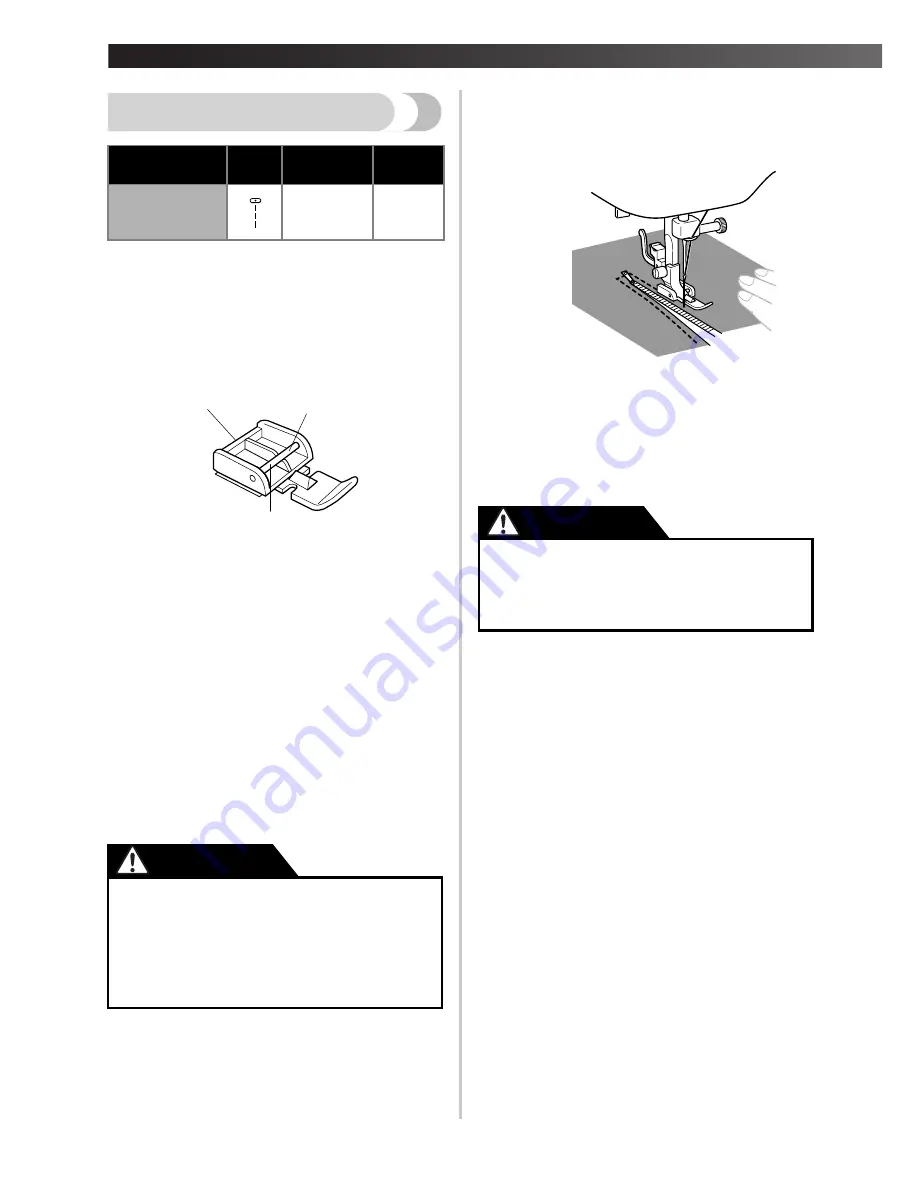
USING ATTACHMENTS AND APPLICATIONS
——————————————————————————————————————
44
Zipper Insertion
You can use the zipper foot to sew different types of
zips, and can easily position it to the right or left side
of the needle.
When sewing the right side of the zipper, attach the
shank to the left pin of the zipper foot. When sewing
the left side of the zipper, attach the shank to the
right pin of the zipper foot.
1
Zipper foot
2
Right pin for sewing the left side of the zipper
3
Left pin for sewing the right side of the zipper
1
Set the Pattern Selection Dial to Straight
Stitch (Center Needle Position. (2.5mm (3/32
inch)).
2
Lower the presser foot lever and fix either the
left or right pin of the zipper foot onto the
shank.
3
Fold the edge of the material 2 cm (3/4 inch)
and place the zipper under the folded section.
Lower the needle into the notch located either
on the left or right side of the zipper foot.
4
Sew from the bottom of the zipper toward the
top on both sides. The needle should be
positioned on the zipper side of the foot for
best results.
5
To sew the opposite side of the zipper, release
the foot by pressing the button located at the
back of the presser foot, fit the zipper foot on
the other side of the zipper and continue
sewing using the other side notch.
Stitch Name
Pattern
Stitch Length
[mm (inch.)]
Foot
Straight Stitch
(Center Needle
Position)
2.5
(3/32)
Zipper
Foot
●
Turn the balance wheel by hand to make
sure the needle does not hit the presser
foot before you start sewing. If you
choose a different stitch, the needle will
hit the presser foot and break the needle.
You may also be injured.
1
2
3
CAUTION
●
Make sure the needle does not hit the
zipper during sewing. If the needle hits
the zipper, the needle may break and you
may be injured.
CAUTION
Summary of Contents for XL-2121
Page 1: ...Operation Manual Operation Manual ...
Page 8: ...1 KNOWING YOUR SEWING MACHINE ...
Page 31: ...KNOWING YOUR SEWING MACHINE 30 ...
Page 32: ...2 STRAIGHT AND ZIGZAG STITCHING ...
Page 36: ...3 BUILT IN STITCHES ...
Page 39: ...BUILT IN STITCHES 38 ...
Page 40: ...4 SEWING BUTTONHOLES AND BUTTONS ...
Page 44: ...5 USING ATTACHMENTS AND APPLICATIONS ...
Page 54: ...6 APPENDIX ...
















































